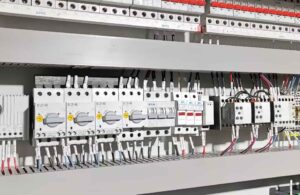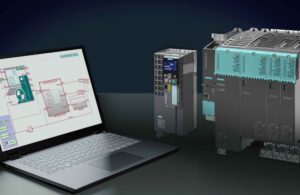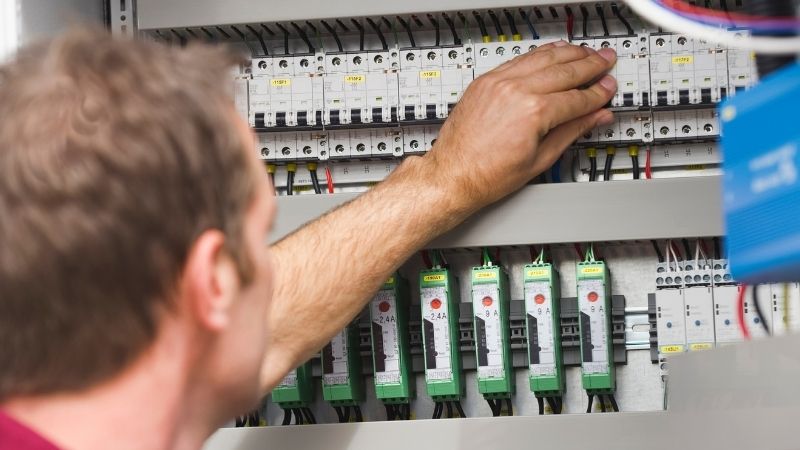Основное руководство по отказам ПЛК и методам устранения неисправностей
В этом руководстве мы рассмотрим распространенные причины ПЛК неисправности, определить предупреждающие признаки и описать методы устранения неполадок, которые помогут вам оперативно решать проблемы и минимизировать время простоя.
Оглавление
Распространенные причины отказов ПЛК
ПЛК могут выйти из строя по многим причинам, начиная от факторов окружающей среды и заканчивая ошибками оператора. Понимание этих причин является ключом к предотвращению неисправностей.
- Электрические неисправности: Скачки напряжения, колебания напряжения или электрические неисправности могут повредить компоненты PLC, что приведет к поломкам. Профилактическое обслуживание, включая защиту от перенапряжения и постоянный мониторинг электропитания, имеет важное значение.
- Экологический стресс: Воздействие высоких температур, пыли, влаги и едких химикатов может со временем ухудшить производительность ПЛК. Регулярная очистка и соответствующая защита могут снизить эти риски.
- Проблемы с программным обеспечением: Программные сбои, такие как ошибки программирования или несовместимости, могут остановить работу ПЛК. Поддержание программного обеспечения в актуальном состоянии и соблюдение передовых методов программирования может предотвратить эти сбои.
- Износ компонентов: Как и в случае с любой механической системой, части ПЛК, такие как вентиляторы и разъемы, могут изнашиваться при использовании. Периодические проверки и своевременные замены помогают предотвратить отказы.
- Электромагнитные помехи (ЭМП): Помехи от близлежащего оборудования могут нарушить функциональность PLC. Реализация экранирования и надлежащего заземления минимизирует эти проблемы.
- Человеческая ошибка: Случайные ошибки ввода данных или неправильное обращение могут привести к сбоям в работе. Правильное обучение и контролируемый доступ снижают вероятность этих ошибок.
Основные индикаторы неисправности ПЛК
Выявление ранних признаков проблем с ПЛК позволяет устранить их до того, как они усугубятся.
- Нестабильные входы и выходы: Нестабильные входные и выходные сигналы являются признаком потенциальных проблем в системе ПЛК.
- Нестабильность мощности: Неисправный блок питания часто приводит к отключению системы или периодическим сбоям.
- Электрический шум: Электрические помехи от внешних источников могут нарушить показания и привести к неожиданному поведению ПЛК.
- Ошибки в общении: Если ПЛК теряет сетевое подключение или часто выдает ошибки связи, это может указывать на внутреннюю неисправность.
- Перегрев: Избыточное тепло внутри системы может указывать на проблемы с внутренними компонентами, что может привести к повреждению чувствительных деталей.
- Повреждение памяти: Поврежденная память в ПЛК может привести к сбоям системы и ненадежной работе.
Основные шаги по устранению неполадок ПЛК
Системный подход может эффективно решить многие проблемы ПЛК.
- Проверьте блок питания.: Убедитесь, что питание ПЛК стабильно и функционирует правильно. Тестирование уровней напряжения и проверка соединений питания — хорошая отправная точка.
- Проверка целостности заземления: Неправильное заземление может привести к электрическим помехам. Обеспечение правильного заземления устранит помехи, улучшив производительность ПЛК.
- Проверка устройств ввода и вывода: Неисправный датчики, приводы или неправильно подключенные соединения могут вызвать системные ошибки. Проверка входных/выходных соединений помогает изолировать неисправные компоненты.
- Проверьте индикаторы состояния: ПЛК часто имеют светодиоды или диагностические индикаторы. Просмотр этих индикаторов и чтение руководства по ПЛК может выявить конкретные коды неисправностей или предупреждения.
Расширенные методы устранения неполадок
Расширенные методы полезны при сложных проблемах или повторяющихся сбоях ПЛК.
- Мониторинг поведения системы: Использование трендов и журналов событий помогает выявлять закономерности в работе ПЛК. Отслеживание изменений температуры, колебаний напряжения и истории аварий может выявить основные проблемы.
- Проведение системного аудита: Регулярный аудит проводки ПЛК, соединений компонентов и конфигураций программирования помогает выявлять потенциальные неисправности до того, как они повлияют на работу.
- Настройка ПИД: Настройка ПИД (пропорционально-интегрально-дифференциальных) контроллеров обеспечивает точный контроль над системными переменными. Правильная настройка имеет решающее значение для стабильности в сложных контурах управления.
- Отладка программы: Расширенное устранение неполадок может включать пошаговое выполнение кода ПЛК для выявления ошибок программного обеспечения или логических проблем. Многие бренды ПЛК предлагают инструменты отладки в своем программном обеспечении.
Профилактическое обслуживание систем ПЛК
Регулярное техническое обслуживание имеет решающее значение для продления срока службы и повышения производительности систем ПЛК.
- Экологический контроль: Хранение ПЛК в стабильной, чистой среде предотвращает повреждение от пыли, влаги и колебаний температуры.
- Замена компонентов: Регулярная замена стареющих компонентов, таких как вентиляторы и разъемы, снижает риск возникновения отказов, связанных с износом.
- Обновления программного обеспечения: Последовательные обновления программного обеспечения улучшают функциональность и безопасность, обеспечивая совместимость с другими промышленными компонентами.
Использование ресурсов и поддержки
Используйте имеющиеся ресурсы для устранения неисправностей и ремонта.
- Документация поставщика: Руководства и технические характеристики являются ценными справочными материалами при диагностике и устранении неисправностей ПЛК.
- Онлайн-форумы и обучающие материалы: Онлайн-ресурсы, включая форумы и видеоуроки, предоставляют практические советы и поддержку сообщества от других профессионалов.
- Эксперты-консультанты: В случае сложных проблем обращение к опытному специалисту по ПЛК или группе поддержки может ускорить устранение неполадок и гарантировать эффективность ремонта.
Обеспечьте свои проекты новыми, оригинальными ПЛК Omron, Mitsubishi, Schneider — в наличии, готовы прямо сейчас!
Заключение
Техническое обслуживание системы PLC необходимо для бесперебойной работы промышленных предприятий. Понимая распространенные неисправности, выявляя ранние предупреждающие признаки и следуя систематическим шагам по устранению неисправностей, вы можете минимизировать время простоя и поддерживать надежность системы.
Внедряйте профилактическое обслуживание и будьте в курсе передовых методов устранения неполадок, чтобы обеспечить бесперебойную работу процессов автоматизации.
Ищете новые оригинальные ПЛК для своих проектов? В Kwoco мы поставляем новейшие ПЛК от ведущих брендов, таких как Омрон, Мицубиси, и Шнайдер. Покупайте с уверенностью — быстрая доставка, гарантированное качество! Купить сейчас
Связаться с нами
Просто заполните свое имя, адрес электронной почты и краткое описание вашего запроса в этой форме. Мы свяжемся с вами в течение 24 часов.
Категория продукта
Горячие продажи товаров
Эти темы также могут быть вам интересны

Реле: типы и руководство по применению
В этой статье подробно рассматриваются реле, невоспетые герои многих электрических систем. Мы рассмотрим различные типы реле, их применение и принцип их работы. Независимо от того, являетесь ли вы инженером, техником или просто интересуетесь тем, как все работает, это всеобъемлющее руководство осветит увлекательный мир реле.

Код неисправности привода Siemens: подробное руководство по поиску и устранению неисправностей
В этой статье представлено подробное руководство по пониманию и устранению кодов неисправностей приводов Siemens. Независимо от того, являетесь ли вы опытным инженером или новичком в промышленной автоматизации, этот всеобъемлющий ресурс поможет вам быстро диагностировать и решать проблемы, минимизируя время простоя и оптимизируя производительность. Его стоит прочитать, поскольку он предлагает практические идеи, пошаговые инструкции и советы экспертов, чтобы ваши операции работали гладко.

Поставщик Omron PLC из Франции рядом с вами
В области промышленной автоматизации залогом успеха являются целостность и эффективность. ПЛК (программируемый логический контроллер) Omron, являясь ядром сложных систем, безусловно, является эталонным брендом в отрасли.






